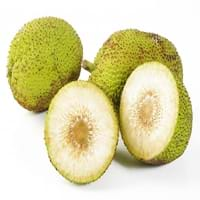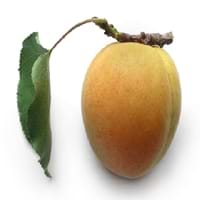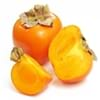Health Benefits
Cancer prevention, Heart care, Maintains healthy cholesterol level, Treatment of skin Diseases
Asthma treatment, Cancer prevention, Controls blood pressure, Digestive aid, Heart care, Maintains hormonal balance, Regulation of heart rate, Skin cleansing, Skin rejuvenation
General Benefits
Boosts immune system, Digestive aid, Helps in weight loss, Maintains healthy cholesterol level
Boosts immune system, Controls blood pressure, Digestive aid, Eye care, Maintains healthy cholesterol level, Strengthens bones
Skin Benefits
Anti-aging benefits, Skin rejuvenation, Treatment of skin diseases
Hydrates skin, Reduces wrinkles, Treatment of dark spots, Treatment of skin diseases
Hair Benefits
Protects hair, Regulates hair growth, Treatment of dandruff
Good conditioner, Regulates hair growth, Rejuvenates scalp, Softening mask, Treatment of dandruff
Allergy Symptoms
Hives, Inflammation of nose, Swelling of mouth, tongue or lips
Abdominal cramps, Anaphylaxis, Breathing difficulty, Diarrhea, Itching of mouth, Itching sensation in throat, Swelling of mouth, tongue or lips, Vomiting, Wheezing
Side Effects
Allergic reaction
Dizziness, Headache, Nausea, Vomiting
Best Time to Eat
Along with meal, As a snack in the late afternoon, Don't consume at night and before bed, Don't eat after meal
Best if taken as a breakfast (or empty stomach), As a snack in the late afternoon, Don't consume at night and before bed, Eat the fresh ones, avoid mixing with any other foods, don't eat after meal.
Vitamin B5 (Pantothenic Acid)
Vitamin C (Ascorbic Acid)
Vitamin K (Phyllochinone)
Phytosterol
Not Available
Calories in Fresh Fruit with Peel
Not Available
Calories in Fresh Fruit without Peel
Not Available
Calories in Frozen Form
Not Available
Not Available
Calories in Dried Form
Not Available
Calories in Canned Form
Not Available
Calories in Jam
Not Available
Type
Fruit vegetable, Tropical
Tree fruit
Season
All seasons
Summer
Varieties
Koqo, Tamaikora, Temaipo, Uto Kuro, Samoa, Buco Ni Viti and Kulu Dina
Gold Cot, Tilton, Wenatchee, Goldbar, Gold Kist, Tomcot, Harcot, Brittany Gold, Harglow, Hunza, Moorpark, Patterson and Royal Rosa
Color
White, Yellow
Orange, Yellowish-orange
Inside Color
White
Yellow
Taste
Bland
Smooth, Sweet
Origin
South Pacific
China
Soil Type
Loam, Sand, Sandy loam, Well-drained
Well-drained
Climatic Conditions
Humid, Rainfall, Warm
Dry, Hot
Facts about
- The milky sap of breadfruit tree is used as glue & bark is used to make papers.
- Breadfruit tree produces 1st fruit after 2-3 years from planting & remains productive for decades.
- The seeds of breadfruit are edible.
- 9 Jan is considered as the National Apricot Day.
- Apricots have been around for more than 4000 yrs.
- In latin, the meaning of apricot is 'precious'.
- 95% of apricots in the US are produced by California.
Top Producer
Jamaica
Turkey
Other Countries
Africa, India, United States of America
Algeria, Egypt, France, Iran, Italy, Morocco, Pakistan, Spain, Uzbekistan
Top Importer
United States of America
United States of America
Top Exporter
Jamaica
France
Botanical Name
Artocarpus altilis
Prunus armeniaca
Synonym
Artocarpus communis or Artocarpus incisa
Not Available
Subkingdom
Tracheobionta
Tracheobionta
Division
Magnoliophyta
Magnoliophyta
Class
Magnoliopsida
Magnoliopsida
Subclass
Magnollidae
Rosidae
Species
A. altilis
P. armeniaca
Generic Group
Mulberry
Rose
Difference Between Breadfruit and Apricot
We might think that Breadfruit and Apricot are similar with respect to nutritional value and health benefits. But the nutrient content of both fruits is different. Breadfruit and Apricot Facts such as their taste, shape, color, and size are also distinct. The difference between Breadfruit and Apricot is explained here.
The amount of calories in 100 gm of fresh Breadfruit and Apricot with peel is Not Available and 48.00 kcal and the amount of calories without peel is 103.00 kcal and Not Available respectively. Thus, Breadfruit and Apricot belong to High Calorie Fruits and Low Calorie Fruits category.These fruits might or might not differ with respect to their scientific classification. The order of Breadfruit and Apricot is Rosales and Rosales respectively. Breadfruit belongs to Moraceae family and Apricot belongs to Rosaceae family. Breadfruit belongs to Artocarpus genus of A. altilis species and Apricot belongs to Prunus genus of P. armeniaca species. Beings plants, both fruits belong to Plantae Kingdom.









